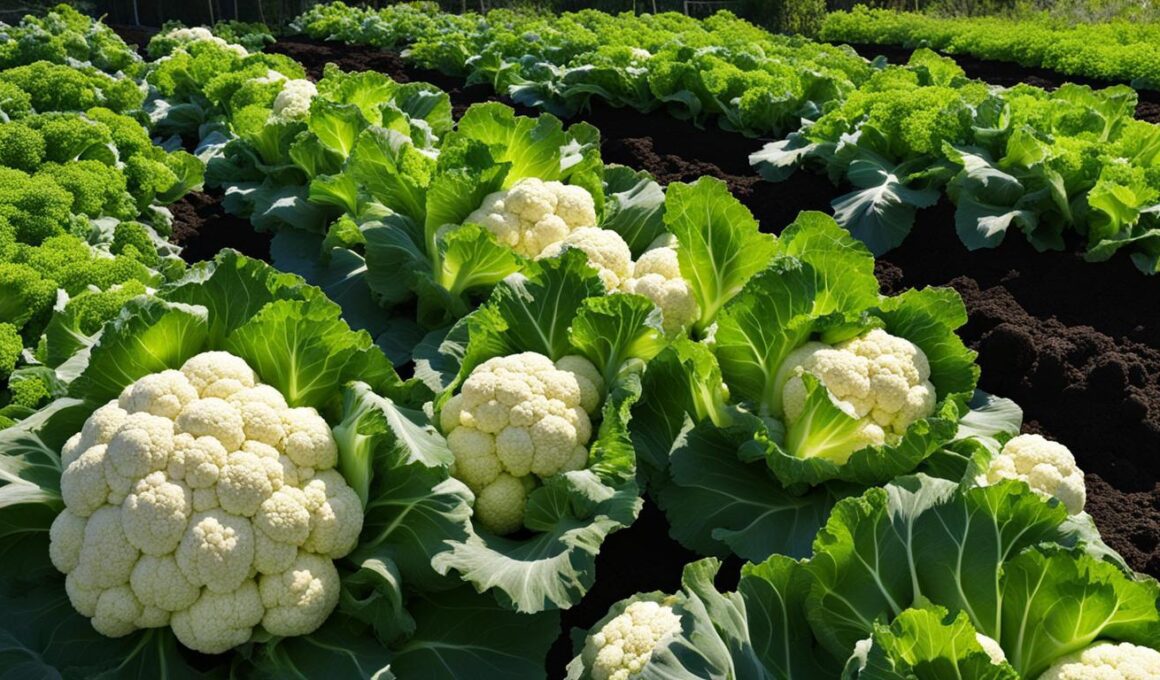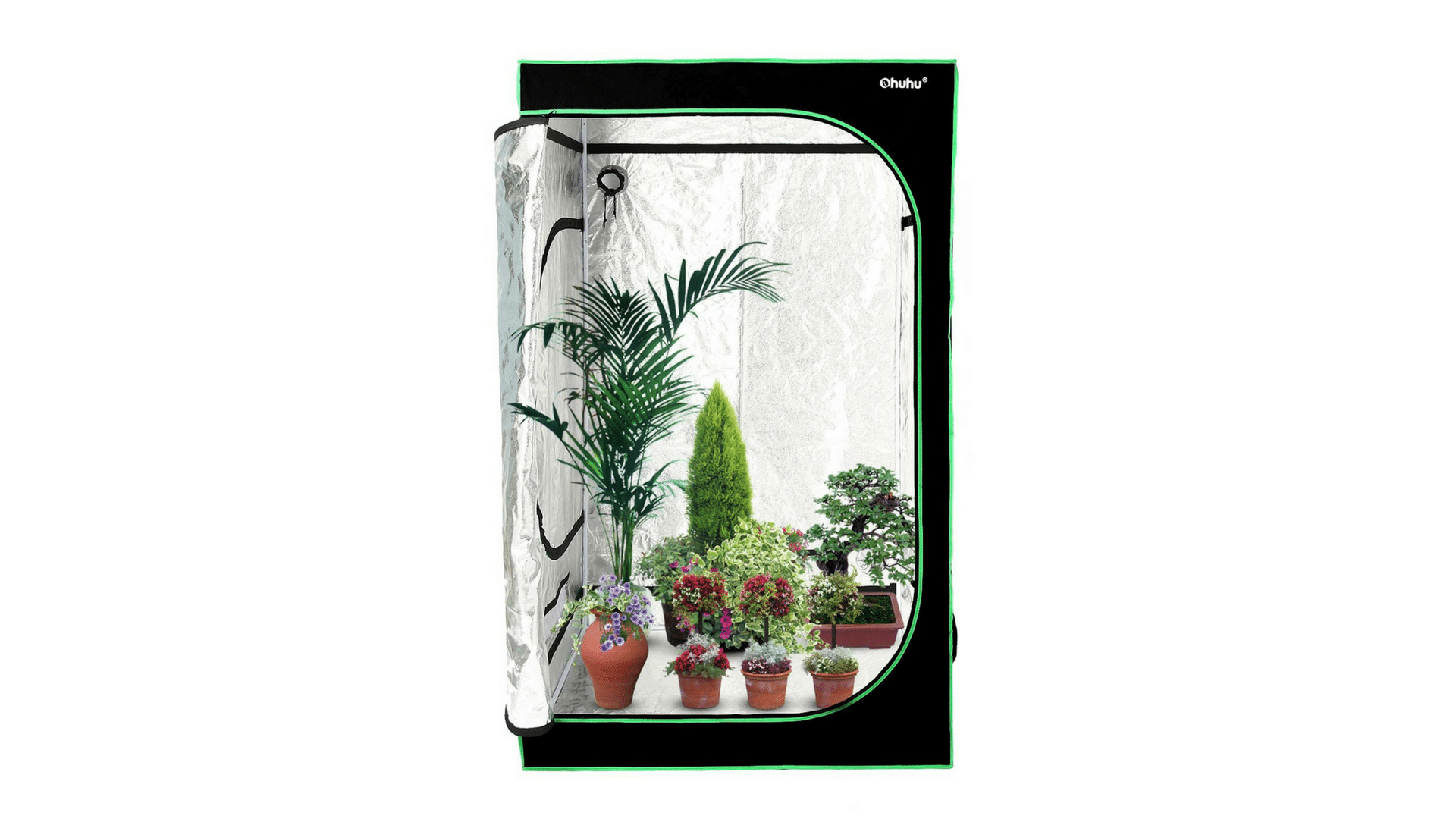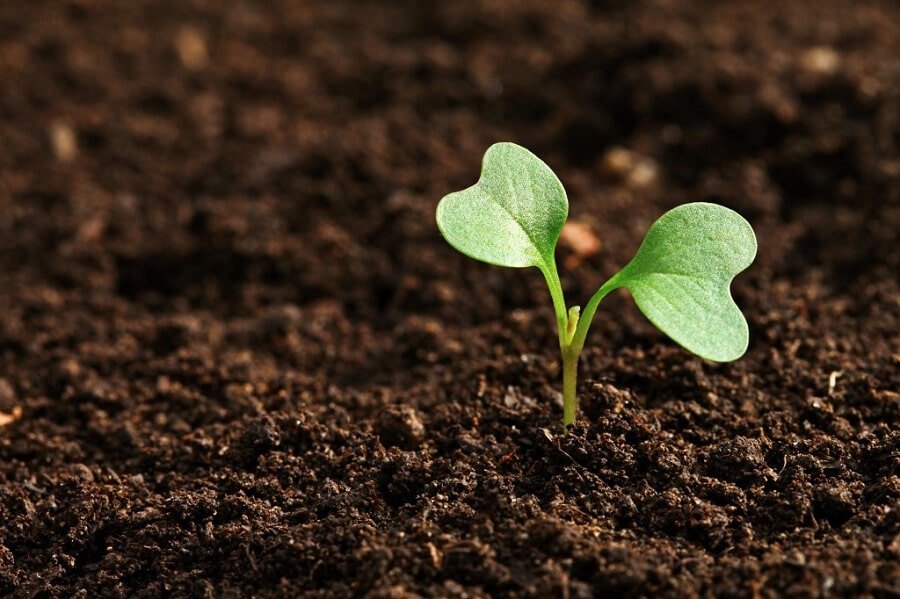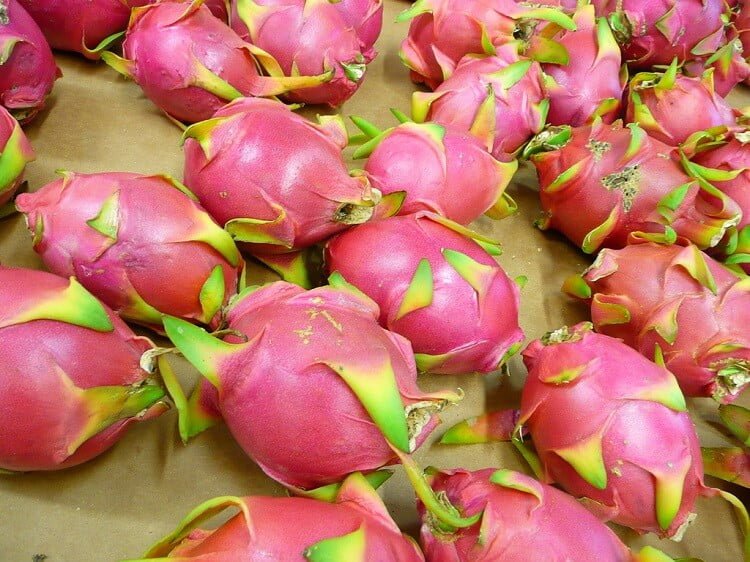Are you a gardening enthusiast looking to maximize your vegetable harvest? In this article, we’ll explore the art of companion planting and how it can benefit your cauliflower and celery crops. By strategically growing these two vegetables together, you can create a thriving garden full of nutritious produce. Let’s dive in and discover some gardening tips for successfully growing cauliflower and celery side by side.
Post Summary:- Companion planting involves growing different plants together for mutual benefit.
- Beans, celery, onions, sage, and thyme are recommended companion plants for cauliflower.
- Avoid planting peas, strawberries, and tomatoes near cauliflower.
- Growing cauliflower and celery together saves space and provides a variety of vitamins and minerals.
- Proper care, watering, and fertilization are essential for successful growth.
What is Companion Planting?
Companion planting is a gardening technique that involves growing different types of plants together to benefit from their interactions. By strategically pairing compatible plants, gardeners can create a symbiotic relationship that promotes healthier growth and better yields. In the case of cauliflower and celery, companion planting offers numerous advantages.
One of the main benefits of companion planting is pest control. Certain plants have natural properties that repel pests or attract beneficial insects, helping to protect neighboring plants. By planting cauliflower and celery together, you can take advantage of this natural defense mechanism and reduce the risk of pest infestations.
In addition to pest control, companion planting can also improve the flavor of vegetables. Some plant combinations have been found to enhance the taste of certain crops. When cauliflower and celery are grown together, they can potentially enhance each other’s flavors, resulting in a more delicious harvest.
“Companion planting allows you to save space in the garden while promoting healthier growth and maximizing your vegetable harvest.”
Furthermore, companion planting can save space in the garden. By growing cauliflower and celery together, you can maximize your garden’s potential and make the most of limited space. This is especially beneficial for urban gardeners or those with small plots.
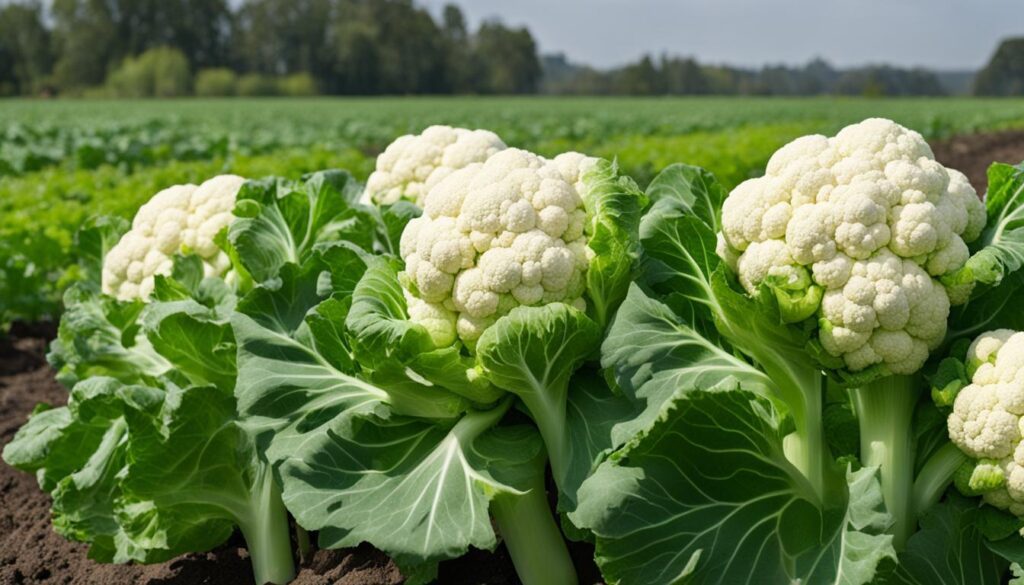
Exploring the Benefits of Companion Planting
When it comes to companion planting, the benefits extend beyond cauliflower and celery. By understanding the synergistic relationships between different plants, you can create a diverse and thriving garden. Some popular companion plant combinations include tomatoes and basil, carrots and onions, and marigolds and beans.
Improving Vegetable Flavor through Companion Planting
If you’re looking to elevate the taste of your homegrown vegetables, companion planting can be a valuable technique. By experimenting with different plant combinations, you can discover new flavor profiles and enhance the overall culinary experience. Whether it’s the sweetness of strawberries next to spinach or the sharpness of garlic alongside tomatoes, companion planting opens up a world of gastronomic possibilities.
How to Grow Cauliflower and Celery Together
When it comes to planting cauliflower and celery together, there are a few key steps you should follow to ensure a successful harvest. First and foremost, it’s important to plant both vegetables at the same time so that they will be ready to harvest simultaneously. Cauliflower takes longer to grow than celery, so it’s best to give it a head start by planting it first.
Both cauliflower and celery have specific spacing and watering requirements. Cauliflower plants should be spaced about 18-24 inches apart, while celery plants should be spaced 6-12 inches apart. Adequate spacing allows each plant to receive the necessary nutrients and sunlight for optimal growth.
When it comes to watering, cauliflower requires consistent moisture, so it’s important to water it regularly. Celery, on the other hand, prefers a slightly drier environment, so be careful not to overwater it. It’s always a good idea to check the soil moisture before watering to ensure you’re providing the right amount.
| Vegetable | Spacing | Watering |
|---|---|---|
| Cauliflower | 18-24 inches apart | Regular watering |
| Celery | 6-12 inches apart | Slightly drier soil |
Regular fertilization is also important for the growth of cauliflower and celery. You can use a balanced fertilizer or apply compost to provide the necessary nutrients. Follow the instructions on the fertilizer packaging for proper application.
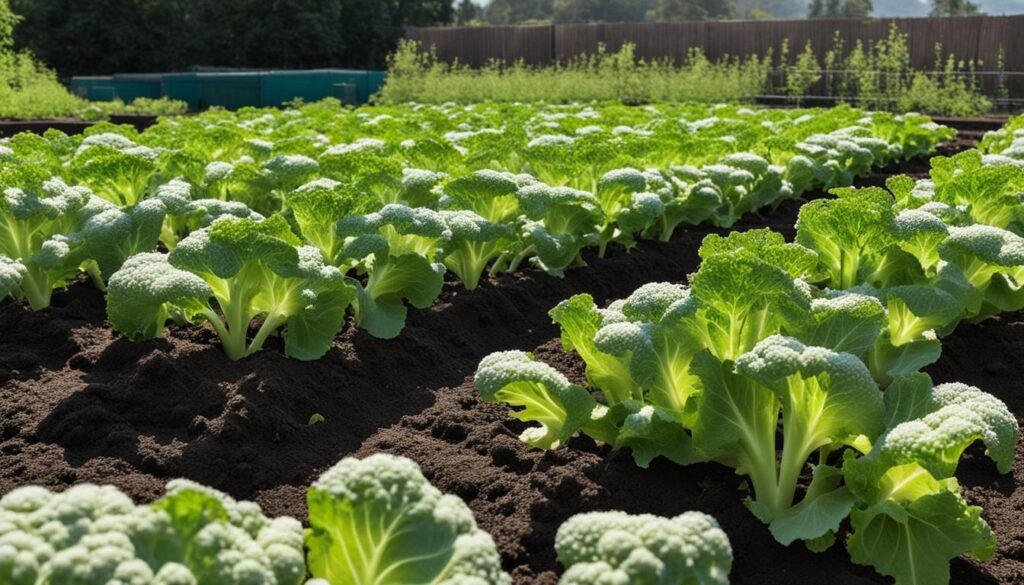
Harvesting cauliflower and celery is an exciting part of the gardening process. Cauliflower is ready to harvest when the head is fully developed and white. Cut the head off with a sharp knife, leaving a few inches of stem attached. For celery, wait until the stalks are about 12 inches tall before harvesting. Cut the stalks off at the base, taking care not to damage the plant.
By following these tips on planting, caring for, and harvesting cauliflower and celery, you can enjoy a plentiful harvest of these delicious vegetables.
Choosing the Right Companion Plants for Cauliflower
When it comes to growing cauliflower, selecting the right companion plants can make a significant difference in the health and productivity of your garden. By choosing compatible companions, you can enhance the growth of cauliflower while reducing the risk of pests and diseases. Here are some recommended companion plants for cauliflower and the benefits they bring:
Companion Plants for Cauliflower
1. Beans: Beans are excellent companions for cauliflower as they fix nitrogen in the soil, improving its fertility for future crops. They also act as a natural mulch, reducing weed growth around cauliflower plants.
2. Celery: Planting celery alongside cauliflower not only saves space but also attracts beneficial insects like lacewings and ladybugs. Additionally, celery has similar water requirements to cauliflower, making them ideal garden companions.
3. Onions: Onions can help deter pests that often target cauliflower, such as aphids and cabbage worms. Their pungent aroma acts as a natural repellent, creating a protective barrier around cauliflower plants.
4. Herbs: Sage and thyme are two herbs that can be planted as companions for cauliflower. They have properties that repel certain pests, including cabbage worms and flea beetles. Plus, their flowers attract bees and other pollinators to the garden.
While these companion plants are beneficial for cauliflower, it’s important to avoid planting certain vegetables near cauliflower. Peas, strawberries, and tomatoes are not recommended companions as they can compete for nutrients and interfere with the growth of cauliflower.
By carefully choosing the right companion plants for cauliflower, you can create a harmonious and thriving garden that supports the growth and health of your cauliflower crop.
| Companion Plants for Cauliflower | Benefits |
|---|---|
| Beans | Fix nitrogen in the soil, improve fertility, act as natural mulch |
| Celery | Attracts beneficial insects, has similar water requirements |
| Onions | Deters pests, acts as a natural repellent |
| Herbs (Sage, Thyme) | Repel certain pests, attract pollinators |
Maximizing Space with Cauliflower and Celery
When it comes to gardening, utilizing space efficiently is crucial. If you’re growing cauliflower and celery together, intercropping is an excellent technique to maximize space and yield a diverse harvest. By combining these two vegetables, you can create a symbiotic relationship that benefits both plants.
Intercropping cauliflower and celery allows you to make the most of your garden space. Cauliflower plants can take up a considerable amount of room, but by planting other crops that can thrive under their tall foliage, you can optimize space usage. Consider planting beets or potatoes, which can utilize the space below the cauliflower while providing shade and protection for their roots.
Not only does intercropping save space, but it also enhances the overall health of your garden. By growing vegetables together, you can create a natural balance that minimizes pest issues and maximizes nutrient availability. For example, celery attracts beneficial insects that help control pests, while cauliflower releases chemicals that repel certain insects. This natural pest control system can significantly reduce the need for pesticides.
| Vegetable | Spacing | Watering |
|---|---|---|
| Cauliflower | 18-24 inches between plants | Consistent moisture, avoid overwatering |
| Celery | 6-8 inches between plants | Regular watering, keep soil moist |
By following proper spacing and watering techniques, you can ensure that both cauliflower and celery thrive together. Remember to provide adequate nutrients through fertilization and monitor for any signs of nutrient deficiencies or pest infestations. With careful attention and planning, you can enjoy a successful and space-saving garden filled with delicious cauliflower and celery.
Common Mistakes to Avoid when Growing Cauliflower and Celery
When it comes to growing cauliflower and celery together, there are some common mistakes that you should avoid to ensure successful growth and harvest. By addressing these mistakes, you can create an optimal growing environment for these vegetables and maximize your garden’s potential.
Problems with Companion Planting
One mistake that gardeners often make is choosing incompatible companion plants for cauliflower and celery. While certain plants can enhance their growth, others can hinder it. For example, avoid planting peas, strawberries, and tomatoes near cauliflower, as they can compete for nutrients and space, affecting the overall health of the plants. Additionally, failing to consider the water and sunlight requirements of companion plants can lead to imbalances in growth and development.
Watering and Fertilizing Tips
Watering and fertilizing are essential aspects of growing cauliflower and celery. Overwatering or underwatering can lead to stunted growth, disease susceptibility, and poor crop quality. It’s important to provide these vegetables with the right amount of water, ensuring that the soil is moist but not waterlogged. Regular fertilization with organic matter or balanced fertilizer can also promote healthy growth and improve nutrient uptake.
Timing and Planting Mistakes
Planting cauliflower and celery at the same time is crucial for successful growth and harvest. If you plant them at different times, you may experience uneven maturity, resulting in delayed or missed harvest opportunities. It’s best to start cauliflower seeds indoors and then transplant the seedlings into the garden when they are about six weeks old. For celery, you can start seeds directly in the garden or use transplants.
Common Mistakes in Growing Cauliflower and Celery
| Mistake | Consequence | Solution |
|---|---|---|
| Choosing incompatible companion plants | Competition for nutrients and space, hindered growth | Research suitable companion plants and their requirements |
| Inconsistent watering | Stunted growth, disease susceptibility | Provide consistent moisture, avoid overwatering or underwatering |
| Planting at different times | Uneven maturity, missed harvest opportunities | Start cauliflower seeds indoors, transplant seedlings at the same time as celery |
By being mindful of these common mistakes and taking the necessary precautions, you can ensure successful growth and a bountiful harvest of cauliflower and celery. Remember to choose compatible companion plants, provide proper watering and fertilization, and plant at the same time. With these tips in mind, your garden will thrive with healthy and delicious vegetables.
Can I Grow Beets and Celery Together in the Same Garden?
Growing beets and cauliflower together in the same garden can be challenging. While both belong to the same plant family, their growing conditions differ. Cauliflower typically needs more space, sun, and cooler temperatures, whereas beets prefer warmer conditions and slightly acidic soil. However, with careful planning and proper spacing, it’s possible to grow these two vegetables together, allowing you to enjoy an abundance of diverse flavors in your garden harvest.
Conclusion
Congratulations on successfully completing your journey to grow cauliflower and celery together using companion planting techniques! By following the companion planting tips and strategies outlined in this article, you have optimized your vegetable harvest and created an ideal growing environment for these nutritious vegetables.
Remember, the key to successful cauliflower and celery gardening is choosing the right companion plants and providing them with proper care. By planting them at the same time, ensuring adequate spacing and water, and being mindful of potential pest issues, you have maximized the potential of your garden.
By utilizing the benefits of companion planting, you have not only saved space but also enhanced the flavor and nutritional value of your harvest. Your garden is now filled with cauliflower and celery, ready to provide you with a bountiful supply of versatile vegetables that can be enjoyed in a variety of delicious dishes.
Now that you have mastered the art of companion planting, you can apply these techniques to other crops in your garden and continue to optimize your vegetable harvest. Keep exploring different companion plants and experiment with new combinations to further enhance your gardening experience. Happy gardening and enjoy the fruits of your labor!
FAQ
What is companion planting?
Companion planting is the practice of growing different types of plants together for their mutual benefit. It can help repel pests, attract beneficial insects, and improve the flavor of vegetables.
How do I grow cauliflower and celery together?
To successfully grow cauliflower and celery together, plant them at the same time so they’ll be ready to harvest simultaneously. Give cauliflower a head start by planting it first. Both vegetables have specific spacing and watering requirements, and regular fertilization is essential for their growth.
What are the best companion plants for cauliflower?
Beans, celery, onions, sage, thyme, and some herbs are recommended companion plants for cauliflower. Beans absorb nitrogen from the air, improving soil for future crops. Celery attracts beneficial insects. Onions deter pests, while sage and thyme repel certain pests and attract bees.
Can I plant peas, strawberries, and tomatoes near cauliflower?
It’s best to avoid planting peas, strawberries, and tomatoes near cauliflower as they can interfere with its growth and nutrient availability.
How can I maximize space with cauliflower and celery?
To maximize space, plant other crops that can benefit from cauliflower’s tall foliage, such as beets and potatoes. These crops can utilize the space below the cauliflower while providing shade and protection for their roots.
What are common mistakes to avoid when growing cauliflower and celery?
Common mistakes include not planting them at the same time, overwatering or not providing enough water, neglecting regular fertilization, planting incompatible companion plants, and neglecting pest control.





